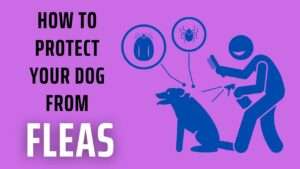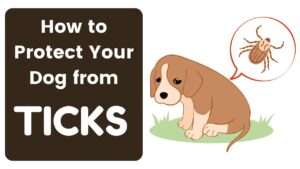Your furry friend’s skin health is a window into their overall well-being. Just like humans, dogs can encounter a variety of skin issues that might go unnoticed without proper inspection. But fear not! In this comprehensive guide, we’ll delve into the depths of dog skin inspection techniques. From understanding common skin problems to mastering the art of thorough examination, embark on this journey to become your pup’s skin health advocate.
Contents Overview
Understanding the Importance of Dog Skin Inspection
Understanding the importance of dog skin inspection is paramount for every dog owner. Just like humans, a dog’s skin serves as a protective barrier against external elements and plays a crucial role in their overall health and well-being. Here’s why dog skin inspection is so significant:
- Early Detection of Health Issues: Dogs are prone to a variety of skin problems, ranging from allergies and infections to parasites and tumors. Regular skin inspection allows you to detect any abnormalities or changes early on, before they escalate into more serious health issues. By catching these problems in their initial stages, you can seek prompt veterinary care and prevent them from worsening.
- Indicator of Overall Health: Your dog’s skin condition can often be an indicator of their overall health. Certain systemic diseases or nutritional deficiencies can manifest as skin abnormalities. By observing your dog’s skin regularly, you can pick up on any changes that may signal an underlying health issue and address it proactively.
- Prevention of Skin Infections: Many skin infections in dogs, such as bacterial or fungal infections, thrive in warm, moist environments. Regular inspection allows you to identify areas of irritation or inflammation that could potentially develop into infections. By keeping your dog’s skin clean and dry and addressing any issues promptly, you can help prevent the onset of skin infections.
- Parasite Control: Parasites like fleas, ticks, mites, and lice can wreak havoc on your dog’s skin and overall health. By inspecting your dog’s skin regularly, you can detect the presence of parasites early and take appropriate measures to eradicate them. This includes using preventive measures such as flea and tick medications and conducting thorough grooming sessions.
- Quality of Life for Your Dog: Dogs with healthy skin are more comfortable and less prone to itching, scratching, and discomfort. By maintaining good skin health through regular inspection and proper care, you can enhance your dog’s quality of life and ensure they remain happy and content.
- Bonding Opportunity: Regular skin inspection provides an excellent opportunity for bonding with your dog. It allows you to spend quality time together while also monitoring their health. By making skin inspection a part of your routine, you strengthen the bond between you and your furry companion.
In essence, dog skin inspection is not just about maintaining your dog’s physical appearance—it’s about safeguarding their health, preventing discomfort, and enhancing their overall well-being. By incorporating regular skin inspection into your pet care routine, you become a proactive advocate for your dog’s health and happiness.
Common Skin Problems in Dogs
Common skin problems in dogs can arise due to various factors, including genetics, environment, diet, and overall health. Understanding these issues is essential for dog owners to recognize symptoms early and seek appropriate treatment. Here are some of the most prevalent skin problems in dogs:
- Allergies:
- Dogs can develop allergies to environmental factors (e.g., pollen, dust mites), food ingredients (e.g., proteins, grains), or even flea saliva.
- Symptoms include itching, redness, inflammation, skin irritation, ear infections, and gastrointestinal issues.
- Allergies can lead to secondary skin infections if left untreated.
- Diagnosis often involves allergy testing and elimination diets to identify triggers.
- Parasites:
- Fleas, ticks, mites, and lice are common parasites that infest dogs’ skin.
- Fleas can cause intense itching, redness, and flea allergy dermatitis (FAD) in sensitive dogs.
- Ticks can transmit diseases like Lyme disease and ehrlichiosis.
- Mites (e.g., sarcoptic mange, demodectic mange) cause intense itching, hair loss, and skin inflammation.
- Regular preventive measures, such as flea and tick control products, are crucial for parasite management.
- Skin Infections:
- Bacterial, fungal (yeast), and yeast infections commonly affect dogs’ skin.
- Bacterial infections often result from underlying issues like allergies or injuries, causing redness, pustules, and crusty lesions.
- Fungal infections like ringworm can cause circular, bald patches with scaly skin.
- Yeast infections thrive in warm, moist areas (e.g., ears, skin folds), causing itching, odor, and greasy skin.
- Treatment typically involves topical or oral medications prescribed by a veterinarian.
- Hot Spots (Acute Moist Dermatitis):
- Hot spots are localized areas of inflamed, infected skin caused by self-trauma (licking, scratching) or moisture accumulation.
- Symptoms include redness, pain, oozing, and hair loss.
- Treatment involves cleaning the affected area, clipping hair, topical medication, and addressing underlying causes like allergies or parasites.
- Dry Skin:
- Dry skin in dogs can result from environmental factors (e.g., low humidity), nutritional deficiencies, bathing too frequently, or underlying health issues.
- Symptoms include flakiness, itchiness, dull coat, and irritation.
- Providing a balanced diet with essential fatty acids, using moisturizing shampoos, and avoiding over-bathing can help manage dry skin.
- Tumors and Growths:
- Dogs can develop benign (non-cancerous) or malignant (cancerous) tumors on their skin.
- Symptoms vary depending on the type and location of the tumor but may include lumps, bumps, ulcers, or changes in skin color.
- Prompt veterinary evaluation is essential for proper diagnosis and treatment, which may include surgical removal, chemotherapy, or radiation therapy.
By recognizing the signs and symptoms of these common skin problems, dog owners can take proactive steps to maintain their pets’ skin health and overall well-being. Regular veterinary check-ups and prompt treatment of any skin abnormalities are crucial for keeping dogs happy, comfortable, and free from skin-related issues.
Mastering Dog Skin Inspection Techniques
Mastering dog skin inspection techniques is essential for every dog owner to ensure their pet’s health and well-being. By conducting regular inspections, you can detect early signs of skin issues, parasites, or injuries, allowing for timely intervention and treatment. Here’s a comprehensive guide to mastering dog skin inspection techniques:
- Prepare the Environment:
- Choose a well-lit area with minimal distractions to conduct the inspection.
- Ensure your dog is comfortable and relaxed, using treats or positive reinforcement to encourage cooperation.
- Gently Part the Fur:
- Begin by gently parting your dog’s fur with your fingers, starting from the head and moving down to the tail.
- Take your time and be thorough, paying attention to all areas of the body, including the belly, legs, and paws.
- Observe Skin Color and Texture:
- Healthy dog skin should be pink or pigmented (depending on breed) and smooth to the touch.
- Look out for any redness, inflammation, bumps, scabs, or changes in texture that may indicate skin problems.
- Check for Parasites:
- Use a fine-toothed comb or your fingers to inspect for fleas, flea dirt (black specks), ticks, or any signs of crawling parasites.
- Pay particular attention to areas where parasites are commonly found, such as behind the ears, around the neck, and along the back.
- Inspect Ears, Paws, and Tail Base:
- These are common areas for skin issues and parasite infestations.
- Check for redness, swelling, discharge, foul odor, or signs of irritation in the ears, between the toes, and around the tail base.
- Look for Hair Loss:
- Examine your dog’s coat for patches of hair loss, bald spots, or excessive shedding, which could indicate an underlying issue like allergies, parasites, or hormonal imbalances.
- Assess for Sores or Lesions:
- Pay close attention to any sores, lesions, or abnormal growths on your dog’s skin.
- Note their size, shape, color, and any associated symptoms such as itching, pain, or discharge.
- Monitor Your Dog’s Behavior:
- Be observant of any changes in your dog’s behavior, such as excessive scratching, licking, or discomfort.
- These behaviors may indicate skin problems or underlying health issues that require attention.
By following these techniques and conducting regular skin inspections, you can become adept at detecting potential issues early and providing your dog with the care they need to maintain healthy skin and overall well-being. If you notice any abnormalities during the inspection, don’t hesitate to consult your veterinarian for further evaluation and guidance. Your proactive approach to dog skin inspection can make a significant difference in your pet’s health and happiness.
Taking Action: What to Do Next
After completing a thorough dog skin inspection and identifying any abnormalities or concerns, taking prompt action is crucial to address the issue effectively. Here’s a detailed guide on what to do next:
- Consult Your Veterinarian:
- Schedule an appointment with your veterinarian for a professional evaluation and diagnosis.
- Provide detailed information about the observed skin abnormalities, including when they were first noticed, any changes in behavior, and any other relevant symptoms.
- Be prepared to answer questions about your dog’s medical history, diet, grooming routine, and lifestyle.
- Follow Treatment Recommendations:
- Based on the veterinarian’s assessment, follow their recommendations for treatment.
- Treatment may involve medications such as antibiotics, antifungals, or anti-parasitic drugs, depending on the underlying cause of the skin problem.
- Follow the prescribed dosage and administration instructions carefully to ensure the effectiveness of the treatment.
- Implement Preventive Measures:
- Take proactive steps to prevent recurrence of the skin issue and maintain your dog’s skin health.
- If the skin problem was caused by parasites, such as fleas or ticks, ensure regular use of preventive products recommended by your veterinarian.
- Maintain a regular grooming routine, including bathing with appropriate shampoos and brushing to remove dead hair and debris.
- Address Underlying Factors:
- Identify and address any underlying factors contributing to the skin issue.
- For example, if the problem was caused by allergies, work with your veterinarian to determine potential allergens and implement dietary changes or environmental modifications.
- If the skin problem is associated with an underlying health condition, such as hormonal imbalances or immune system disorders, follow your veterinarian’s recommendations for managing the condition.
- Monitor Progress:
- Keep a close eye on your dog’s response to treatment and monitor for any improvement or worsening of symptoms.
- Follow up with your veterinarian as advised to assess the progress of treatment and make any necessary adjustments.
- Document any changes in your dog’s skin condition, including photographs, to track progress over time.
- Maintain Regular Veterinary Check-ups:
- Schedule regular veterinary check-ups to monitor your dog’s overall health and skin condition.
- Routine examinations allow your veterinarian to detect any potential issues early and provide preventive care to keep your dog healthy and happy.
By taking these proactive steps and working closely with your veterinarian, you can effectively address your dog’s skin issues and ensure their continued health and well-being. Remember, early intervention and consistent care are key to resolving skin problems and maintaining optimal skin health for your furry companion.
Bottom Line
Your dog’s skin is a reflection of their overall health and well-being. By mastering the art of skin inspection and staying vigilant for any signs of trouble, you can play a proactive role in preserving your furry friend’s skin health. Remember, early detection and intervention are key to addressing skin issues effectively. So, embark on this journey of canine skin care with confidence, knowing that you’re equipped with the knowledge to keep your beloved pet happy and healthy.




























+ There are no comments
Add yours